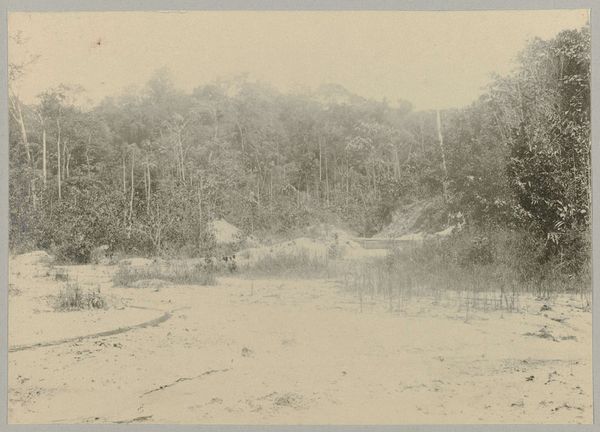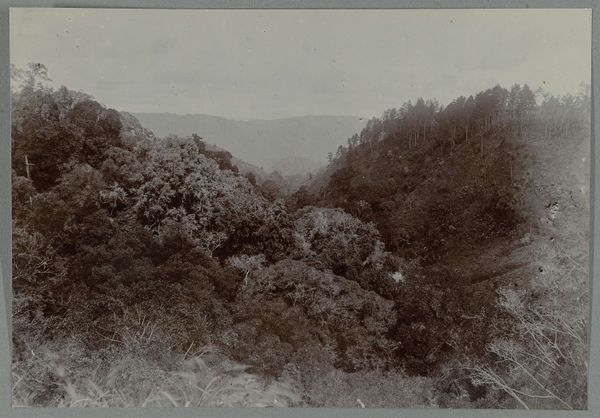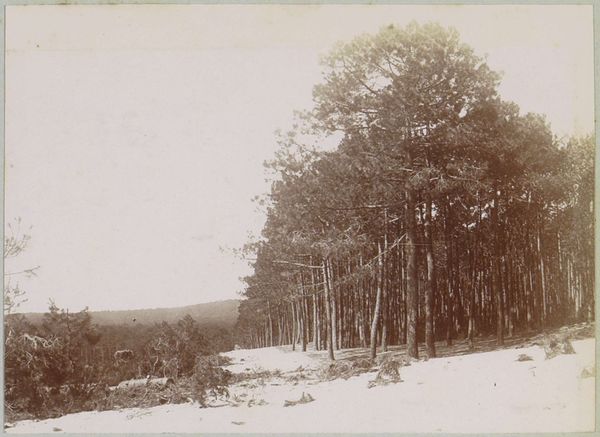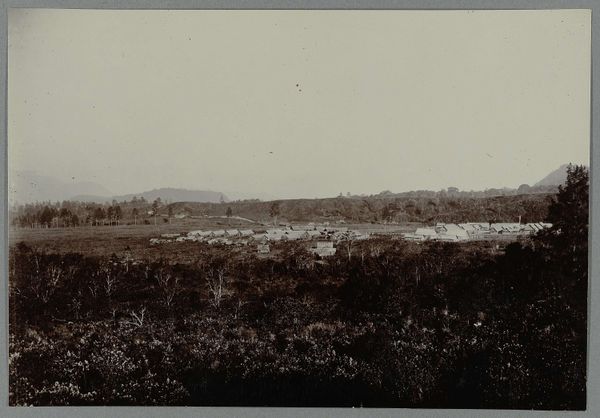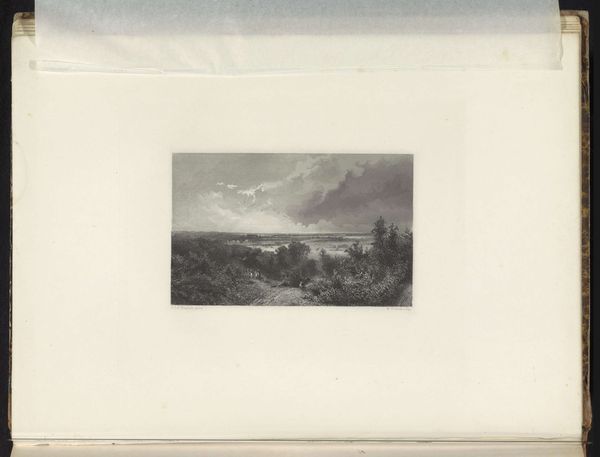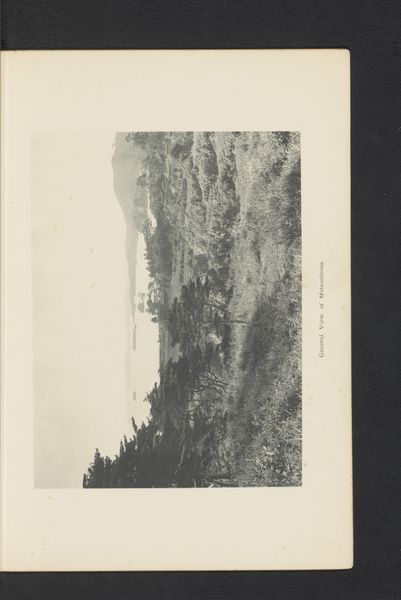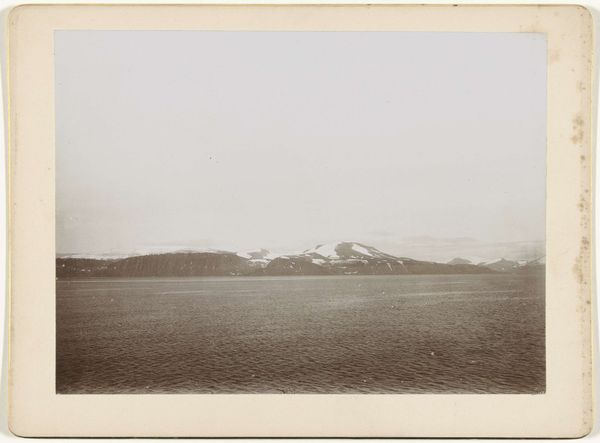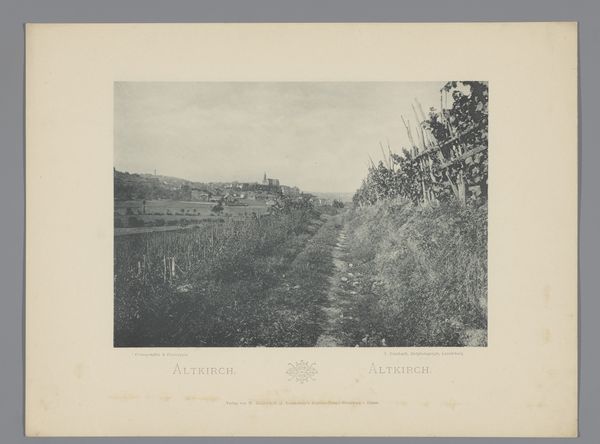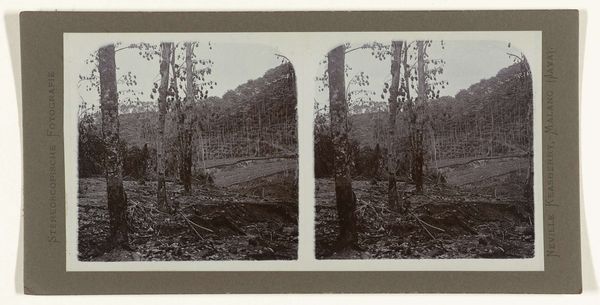
print, photography, albumen-print
#
water colours
# print
#
landscape
#
photography
#
watercolor
#
albumen-print
#
realism
Dimensions: height 120 mm, width 160 mm
Copyright: Rijks Museum: Open Domain
Curator: Hendrik Doijer’s “Graven van nieuw zoutwaterkanaalvak op Totness,” an albumen print created between 1903 and 1910. It depicts laborers on a plot of land. Editor: The overwhelming, almost monochromatic, blue gives it an eerie feel. It's a stark landscape dominated by the remnants of felled trees. What's immediately striking is the small scale of the figures in relation to the immensity of the land. Curator: The construction of this canal section likely involved complex social dynamics. Photography like this played a key role in documenting infrastructural developments but also in constructing colonial narratives around progress and civilization. The indigenous populations' land rights were very frequently ignored in the interests of expanding commerce. Editor: Absolutely, we should look at how these seemingly innocuous landscapes often mask forced labor and exploitation. Who are these figures, really? Their blurred faces become representative of so many unknown individuals, people whose work shaped the landscape yet were deliberately obscured from the record. What systems were used to facilitate and benefit from this large project? Curator: We can interpret Doijer's work as reinforcing a colonial project, where the relentless modification of the land symbolizes control and extraction. There’s also a certain ambiguity, right? The scale, as you mentioned, can inspire feelings of alienation too. Editor: The repetitive and manual clearing of land speaks volumes about the time, one defined by grueling, often unacknowledged labour and the subjugation of natural landscapes to facilitate profit and power. And that this piece is an albumen print adds another layer to our exploration: photography itself, from the turn of the 20th century forward, functioned to present this perspective as natural or good, furthering its hegemonic role. Curator: It’s true. Photography has historically been used to legitimize various political agendas. Seeing this piece displayed prompts vital conversations regarding the use of documentary methods. Editor: Engaging with artwork that documents infrastructural development must make visible the often invisible structures of power and erasure. Thanks for opening my eyes to it in new ways! Curator: Likewise. Examining photography of this nature certainly underscores how closely linked art is to socio-political conditions.
Comments
No comments
Be the first to comment and join the conversation on the ultimate creative platform.
